
Schubert 's E-flat major Mass was composed in 1828, his final year. Even though Schubert had distanced himself from his father's bigoted piety after moving out of his parents' house, religion was to remain a private matter of existential importance to him. He documented his own faith now and then...more
"Anyone who doesn’t have a version of this work in his or her collection could do far worse than invest in this recording." (www.musicweb.uk.net)





Track List
Franz Schubert F. Schubert: Mass No. 6 in E-flat major, D 950 (53:42) Anton Nowakowski | Gundula Janowitz | Grace Hoffmann | Waldemar Kmentt | Albert Gaßner | Franz Crass | Symphonieorchester des Bayerischen Rundfunks | Chor des Bayerischen Rundfunks | Rafael Kubelik
Details
| Franz Schubert: Mass No. 6 in E-flat major, D 950 | |
| article number: | 92.541 |
|---|---|
| EAN barcode: | 4022143925411 |
| price group: | ACX |
| release date: | 1. June 2005 |
| total time: | 53 min. |
Informationen
Schubert 's E-flat major Mass was composed in 1828, his final year. Even though Schubert had distanced himself from his father's bigoted piety after moving out of his parents' house, religion was to remain a private matter of existential importance to him. He documented his own faith now and then in his works: "People were also quite surprised by my piety, which I expressed in a hymn to the Holy Virgin; it apparently takes hold of people of all dispositions, putting them in a devotional mood."
With its performance duration of approximately one hour, the Mass extends beyond the temporal boundaries of the Catholic liturgy, exceeding the given formal limits in a sovereign manner. The Kyrie, which opens the Mass with a striding rhythm in the low strings and soft trombone chords, immediately develops the large-breathed, extended, symphonic dimensions in form and expansion of the Mass attained by Schubert. The solo parts are not richly ornamented, but at times have the effect of being embedded in the overall choral texture. The operatic exposition of soloists and their virtuosity was not Schubert's principal concern, but rather the sonic alternation between soloist and vocal ensemble in the choir of the faithful. Schubert's overriding interest was to achieve a balance between the classical Viennese sacred music tradition, the requirements of the clergy and his own musical aims. The two extended fugues at the end of the Gloria and the Credo are doubtless among the concessions made to the sacred music tradition. Schubert seems to be searching for a new interpretation of old forms in the Mass, a different approach to that of his late symphonies.
This live recording of 22 March 1968 in the Herkules-Saal of the Munich residence with Rafael Kubelik and the Bavarian Radio Symphony Orchestra is issued in SACD format. It is the continuation of our series "LISTEN & COMPARE", which offers the SACD listener the possibility of directly comparing the revised, updated version to the completely unadulterated original archive recording.
Reviews

www.SA-CD.net | March 30, 2010 | John Miller | March 30, 2010
Schubert penned this last, and some would say the greatest, of his sacredMehr lesen

CD Compact | Año 20, Nº 198 Mayo 2006 | Jesús Dini | May 1, 2006
Schubert terminó su maravillosa misa en Mi bemol D950 entre junio y julioMehr lesen
Fanfare | May/June 2006 | James Reel | May 1, 2006
Wolfgang Sawallisch recorded all of Schubert’s Masses for EMI with the Bavarian Radio Symphony Orchestra and Chorus, and with a starry cast ofMehr lesen
This is Schubert’s final Mass, completed just weeks before his death, but there’s no hint of Requiem about it. It’s big and symphonic, but symphonic in the Haydn-Mozart sense; Schubert had to conform to conservative Viennese liturgical strictures that had hardly changed in decades.
Kubelík directs a devotional performance, firm but not overtly dramatic. The soloists are good and the chorus sings well, aside from a few stray moments of unsteadiness (as in the last chord of the Gloria), but its enunciation is often mushy. An example of Kubelík’s apt but gentle touch: the woodwind figures that punctuate the solo vocal passages in the Credo have a lovely Viennese lilt. This is not the most gripping performance imaginable, but it is sensitive and effective.
This disc’s SACD layer includes a version apparently faithful to the original tapes, and a re-mastered version with various unspecified tweakings. The re-mastered version, not the original, is also on the standard CD layer. The re-mastered audio seems closer and more revealing of detail, but it also makes the violins sound a bit harsher. In every case, it’s two-channel sound.
American Record Guide | March/April 2006 | Koob | March 1, 2006
Schubert's sixth and final mass (seventh if you count his German Mass) is his masterpiece in the genre and part of the incredible gush of musicalMehr lesen
Schubert was certainly familiar with his idol Beethoven's Missa Solemnis and paid tribute to it here. Running nearly an hour, its “heavenly lengths” indeed approach the dimensions of that choral behemoth. But, unlike Beethoven (who didn't care whom he offended), Schubert couldn't bring himself to entirely abandon the strict Viennese church music protocols of the day. So he avoided Beethoven's humanistic overtones, wrote distinctly non-operatic parts for his soloists, and stuck to subdued orchestration that eschewed “frivolous” instruments like flutes. Remember, Schubert was deeply steeped in the classical mass tradition, having sung the best ones by Haydn and Mozart as a Hapsburg Court choirboy under Salieri.
But why look for hints of Beethoven from Schubert's gentle soul? He has left us here what he's best at: broad rivers of long-breathed melody, ingenious modulations, gut-wrenching beauty – and his own sweet sincerity of spirit. No composer captured moods and emotions – including sacred ones – more honestly or effectively than Schubert. Just as he can sound happier, more playful, more lovesick, more agitated, or more depressed than any other, he can sound more pious and reverent as well. Even though Schubert was insecure about his abilities as a contrapuntalist, he achieved sacred drama and solemnity here (and further supported sacred traditions) by means of some very impressive polyphony, especially the massive fugues that end both the Gloria and the Credo.
This account – recorded in concert – is a dream come true. Rafael Kubelik is a Schubertian to the core and taps this ethereal score for every drop of its spiritual exaltation. Chorus, orchestra, and soloists are all caught up in his spiritual spell and perform splendidly. All of the rather subdued solo roles are beautifully handled, but I fell in love with Gundula Janowitz’s radiant soprano all over again. Their ‘Et incarnatus est’ ensemble, not far into the Credo movement – ravishing, gently rocking interlude in 6/8 time – is unforgettable.
This is part of a new Super-Audio series from Audite, dubbed “Listen and Compare”. Each release contains two versions of the same recording. One is a sophisticated digital restoration of the original concert tapes, re-engineered for multi-channel SA; the other – also copied into the SA format – presents the otherwise unrestored historical archive. And therein lies the only fly in the ointment for me. My SA player duly delivered the very lush and detailed restoration in totally ear-pleasing fashion, but wouldn't read the tracks containing the undoctored copy of the source tapes. Having noticed no other defects in my equipment, I hesitate to lay the blame on it. Perhaps the producers of this recording should be aware that some SA players apparently can't handle their product.
But no matter: a sublime masterpiece, sympathetically performed by legendary artists and reproduced in rich, clear sound is always welcome. I'll look forward to future releases from this series.

opushd.net - opus haute définition e-magazine | Numéro 1 | Jean-Jacques Millo | January 23, 2006
Schubert et la musique sacrée. Voilà un sujet intéressant qui est,Mehr lesen

www.musicweb-international.com | January 2006 | John Quinn | January 3, 2006
The Audite label continues to put collectors in their debt by issuing live performances conducted by Rafael Kubelik. This issue is particularlyMehr lesen
There is much fine music in this Mass setting, one of the two most substantial that Schubert composed. I regret that there’s not more for the soloists to do. They don’t feature at all until the Credo, and then in a limited way, after which they have more to do in the Benedictus and Agnus Dei. Kubelik’s team make the most of their relatively limited opportunities to shine. This Mass is a substantial composition in which most of the musical argument is carried by the chorus. Schubert could have pruned it a bit, especially in the Gloria and Credo, without sacrificing much.
In this performance the Kyrie flows nicely. The Gloria starts strongly and Kubelik and his forces make good use of dynamic contrast. I was glad, but not surprised, to find that Kubelik keeps the music moving forward nicely. For my money, however, there are some excessively repetitious passages. The central section of the Gloria, starting at ‘Domine Deus’ (4:41 in this reading) is dramatic and the Bavarian trombones ring out assertively and darkly. The music is quite jagged at times and Kubelik makes the most of this. But surely Schubert extends this section too much? In even this well paced performance the section lasts over four minutes and I find my attention wandered a bit. Equally, the fugue with which the Gloria rather predictably concludes is too extensive. I like Kubelik’s sprightly pacing, despite which his choir articulates the notes well, but even so three and a half minutes is a trifle excessive for the material.
The soloists finally get involved – or some of them do – in an andante terzetto in the Credo at ‘Et incarnatus est’ When I first heard this performance I thought the section sounded a bit laboured. But the tempo is virtually identical to that adopted by Wolfgang Sawallisch in his fine 1980 EMI recording, by coincidence also with the Bavarian choir and orchestra. A comparative listening exercise suggested to me that the reason that the passage sounds better under Sawallisch is because his soloists phrase the music more lightly and imaginatively. The musical material for this section is echt-Schubert but for all its merits I do wonder if he should have indulged in a repetition of the music after the choir has sung ‘Crucifixus etiam pro nobis’. Apart from any musical considerations the repetition of ‘Et incarnatus’ at this point makes no textual sense. As in the Gloria this movement concludes with a fugue, lasting this time for some four minutes. Once again I found myself wishing that Schubert had edited his material – and it’s an exacting sing for the chorus as I know from personal experience. However, Kubelik’s choir delivers it very well.
The opening of the Sanctus is majestic in Kubelik’s hands. The lively ‘Osanna’ is well sung; the choir demonstrates, as they do throughout the piece, lots of commitment and they sing with good, unforced tone. In the Benedictus we hear at greater length from the soloists – the full quartet this time – and they do well.
The concluding Agnus Dei is a powerful movement. In the first four bars that the basses sing there’s a tiny moment in which the singing is just less than unanimous. This is remarkable in that it’s the only (and very minor) choral blemish that I noticed throughout the whole performance. The choir and orchestra project the dramatic passages here very strongly and they’re just as successful in the much more subdued music for ‘Miserere nobis’.
This is a very good performance of Schubert’s Mass, which, despite its occasional longueurs, is a fine work. Kubelik conducts with dedication and with fidelity to the score. He’s well supported by his singers and orchestra. I’d rank this reading as pretty much on a par with Sawallisch’s, which I’ve admired for many years. The recorded sound is very pleasing. I’ve only listened to the disc as a conventional CD. Audite explain in a booklet note that the recording is presented on what they call a Listen and Compare basis. This means that on an SACD player "one can hear the unrevised historical archive recording [on separate tracks] following the restored version." I’d advise SACD collectors to read the note in full for themselves.
Anyone who doesn’t have a version of this work in his or her collection could do far worse than invest in this recording.

Audiophile Audition | December 2005 | Gary Lemco | December 2, 2005 Hi-res stereo release of an elegant 1968 performance by Kubelik
Schubert drafted his E-flat Mass on a commission from Michael LeitermayerMehr lesen
klassik.com | November 2005 | Miquel Cabruja | November 4, 2005 | source: http://magazin.k... Licht und Schatten
Licht und Schatten – das könnte das Motto sein, unter dem die letztenMehr lesen

www.classicstodayfrance.com | Novembre 2005 | Christophe Huss | November 1, 2005
Rafael Kubelik a de la Messe en mi bémol une vision dramatique (cf. lesMehr lesen

Classica-Répertoire | Novembre 2005 | Philippe van den Bosch | November 1, 2005 Discophage : les meilleures prises de son
Un enregistrement de concert de 1968 en SACD, et sélectionné pour leMehr lesen

Classica-Répertoire | Octobre 2005 | Xavier de Gaulle | October 1, 2005
Kubelik, dans ce concert munichois du 22 mars 1968, prend à bras le corpsMehr lesen

Diapason | Octobre 2005 | Benoît Fauchet | October 1, 2005
La Messe en la bémol (1828), chef-d'œuvre de synthèse spirituelle et musicale, jouit d'une discographie luxueuse, presque idéale ; à elle seule,Mehr lesen

Muzyka21 | październik 2005, 10 (63) | Stanisław Lubliński | October 1, 2005
Msze nr 6 Schubert skomponowal tuz przed smiercia. Jest to utwór bardzoMehr lesen

levante | A.Gascó | September 3, 2005 El místico Schubert final
La misa D. 950 de Schubert es su canto del cisne de su muy abundanteMehr lesen

Frankfurter Rundschau | 13. August 2005 | August 13, 2005 Die drei Wünsche:
Hervorragend: Schubert, Es-Dur-Messe D. 950; Gundula Janowitz, GraceMehr lesen
Der neue Merker | Nr. 116 | Dorothea Zweipfennig | July 1, 2005
Schuberts Es-Dur Messe entstand in seinem letzten Lebensjahr 1828. AuchMehr lesen

Musicus | 3/05 | March 1, 2005
In dieser live-Aufnahme von 1968 aus dem Herkulessaal München dirigierteMehr lesen
News
Schubert penned this last, and some would say the greatest, of his sacred works...
Hi-res stereo release of an elegant 1968 performance by Kubelik
Schubert terminó su maravillosa misa en Mi bemol D950 entre junio y julio de...
Schubert et la musique sacrée. Voilà un sujet intéressant qui est,...
Wolfgang Sawallisch recorded all of Schubert’s Masses for EMI with the...
Schubert's sixth and final mass (seventh if you count his German Mass) is his...
In dieser live-Aufnahme von 1968 aus dem Herkulessaal München dirigierte Rafael...
Msze nr 6 Schubert skomponowal tuz przed smiercia. Jest to utwór bardzo...
La Messe en la bémol (1828), chef-d'œuvre de synthèse spirituelle et...
Kubelik, dans ce concert munichois du 22 mars 1968, prend à bras le corps cette...
The Audite label continues to put collectors in their debt by issuing live...
Rafael Kubelik a de la Messe en mi bémol une vision dramatique (cf. les cuivres...
Schuberts Es-Dur Messe entstand in seinem letzten Lebensjahr 1828. Auch wenn...
More from Franz Schubert


Beethoven – Schubert – Voříšek: Works for Cello and Fortepiano
Ludwig van Beethoven | Franz Schubert | Jan Václav Voříšek CD
Claudio Abbado conducts Schubert, Beethoven & Wagner
Franz Schubert | Ludwig van Beethoven | Richard Wagner CD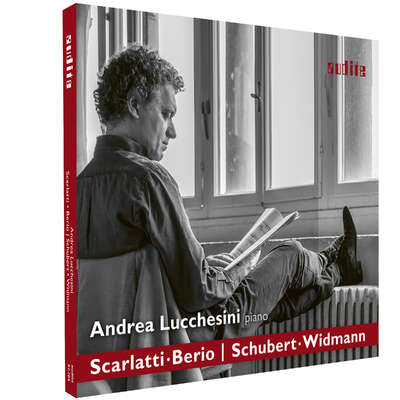
Dialogues
Domenico Scarlatti | Luciano Berio | Franz Schubert CD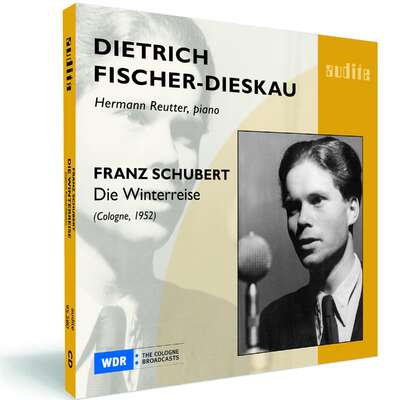
Die Winterreise (1952)
Franz Schubert CD
Edition Fischer-Dieskau (V) – F. Schubert: Die Winterreise (1948)
Franz Schubert CD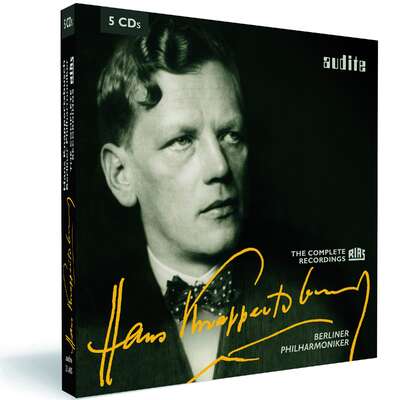
Edition Hans Knappertsbusch & Berliner Philharmoniker – The complete RIAS recordings
Anton Bruckner | Franz Schubert | Ludwig van Beethoven 5CD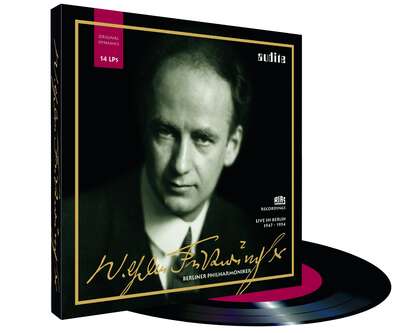
Edition Wilhelm Furtwängler – RIAS recordings with the Berlin Philharmonic on 14 LPs
Ludwig van Beethoven | Anton Bruckner | Franz Schubert 14LP-180g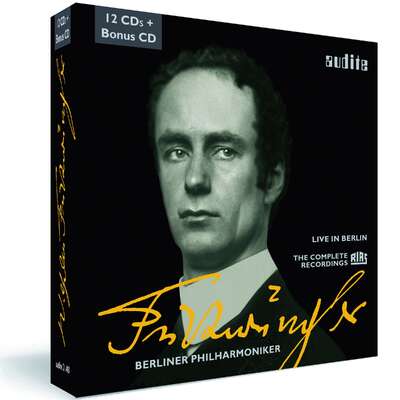
Edition Wilhelm Furtwängler – The complete RIAS recordings
Ludwig van Beethoven | Felix Mendelssohn | Johann Sebastian Bach 13CD
Elisabeth Schwarzkopf interprets songs by Wolf, Schubert, Strauss, Purcell, Arne & Quilter
Hugo Wolf | Franz Schubert | Richard Strauss CDMore from this Genre
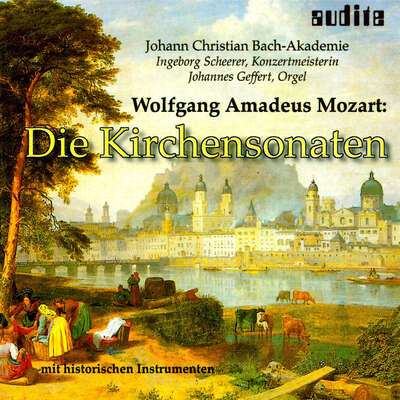
Church Sonatas
Wolfgang Amadeus Mozart CD
Orchestral Works I
Eduard Franck CD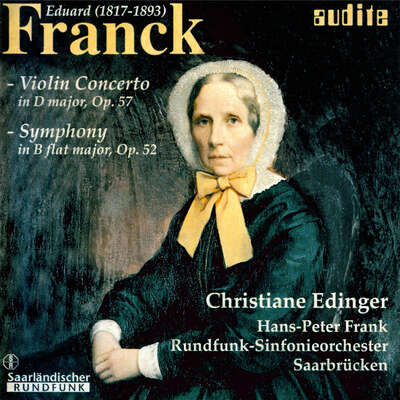
Orchestral Works II
Eduard Franck CD
Dvořák & Tchaikovsky: Serenades
Antonín Dvořák | Piotr Ilyich Tchaikovsky CD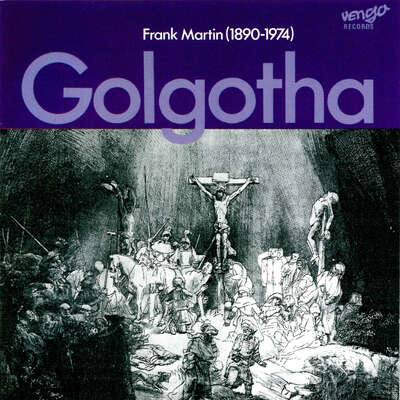
Golgotha
Frank Martin 2CD
Edition Wilhelm Furtwängler – The complete RIAS recordings
Ludwig van Beethoven | Felix Mendelssohn | Johann Sebastian Bach 13CD
Edition Hans Knappertsbusch & Berliner Philharmoniker – The complete RIAS recordings
Anton Bruckner | Franz Schubert | Ludwig van Beethoven 5CD
Edition Sergiu Celibidache | The complete RIAS recordings
George Gershwin | Maurice Ravel | Ferruccio Busoni 3CD
Ferenc Fricsay conducts Béla Bartok – The early RIAS recordings
Béla Bartók 3CD







